After Fantasmas , We’re More Obsessed With Julio Torres’s Visual World Than Ever Before
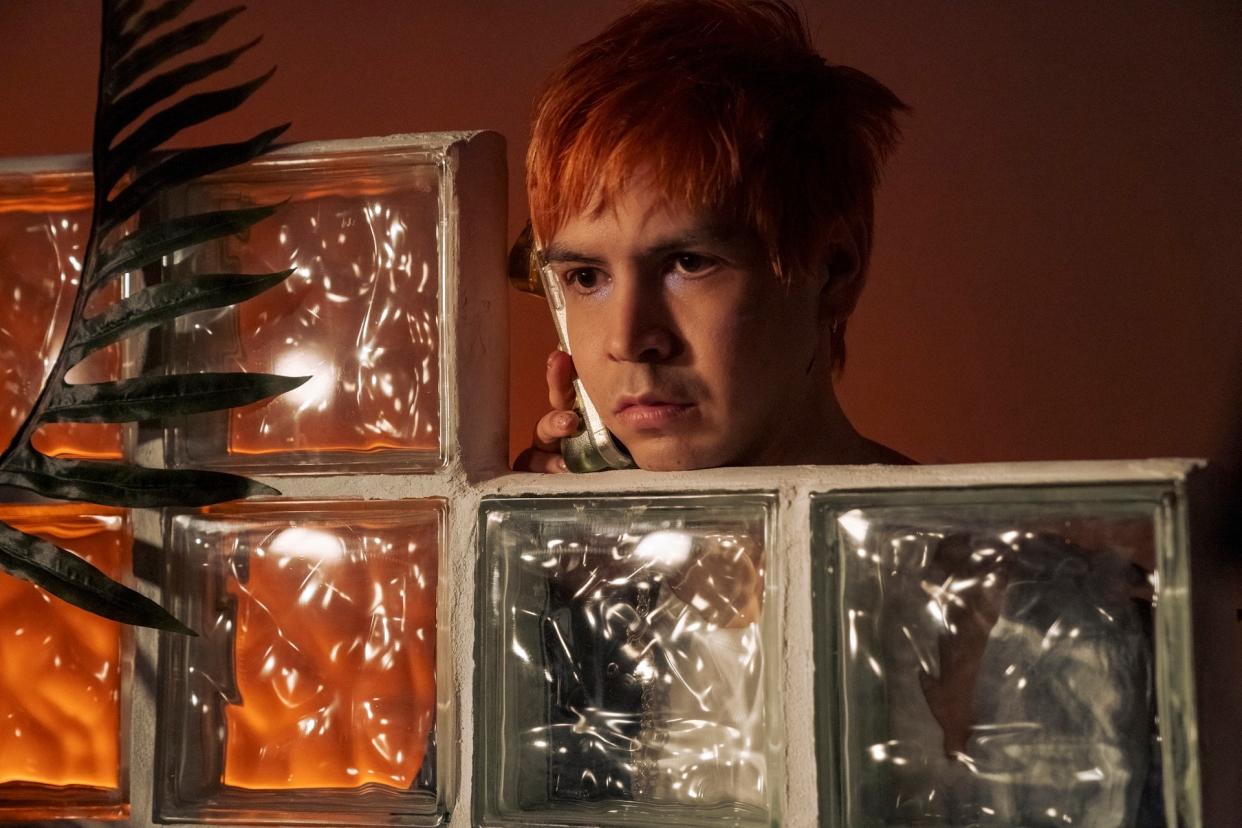
Photo: Atsushi Nishijima/HBO
Comedian and writer Julio Torres’s latest creation, Fantasmas, is not your typical New York–based sitcom. The show follows Torres, playing himself, as he traverses the city looking for a small gold oyster-shaped earring. The journey takes him from an urgent care with a large blinking timer that announces just how little time the doctor is willing to spend with him to a gay nightclub that once housed a scaled-down gay nightclub for hamsters, and then to an internet cafe that’s the perfect mix of depressing and bizarre. Throughout the episodes, viewers fall down various sketch rabbit holes that are barely related to the primary narrative. There’s a commercial for a woman who makes clothes for toilets, a televised trial between Santa Claus and one of his elves (played by Bowen Yang), and a dip into the life of an overly committed insurance-call-center agent (Alexa Demie), among many other wonderfully eccentric asides.
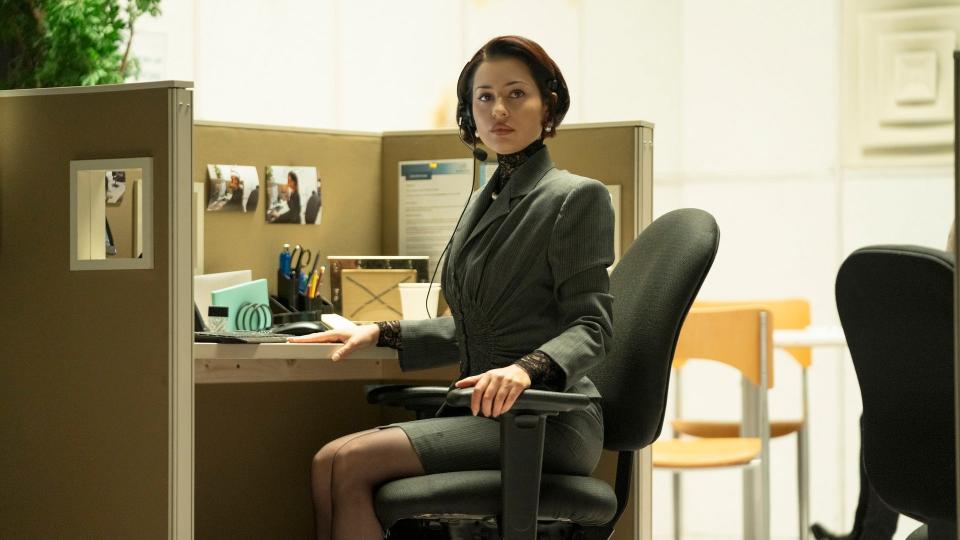
A sensitivity to visuals has always been a key element of Torres’s work. The most widely beloved sketch he penned at SNL, “Papyrus,” is about a man who can’t shake the feeling that the font Papyrus was too basic a choice for the movie Avatar’s logo. In his 2019 standup special, My Favorite Shapes, he displays his power to give everyday objects new meaning. In his first feature film, Problemista (costarring Tilda Swinton), released earlier this year, his character is a toy designer who dreams of creating products for Hasbro. In Fantasmas, working with production designer Tommaso Ortino, Torres has created a version of New York with all of its ironies heightened and oddities in full focus.
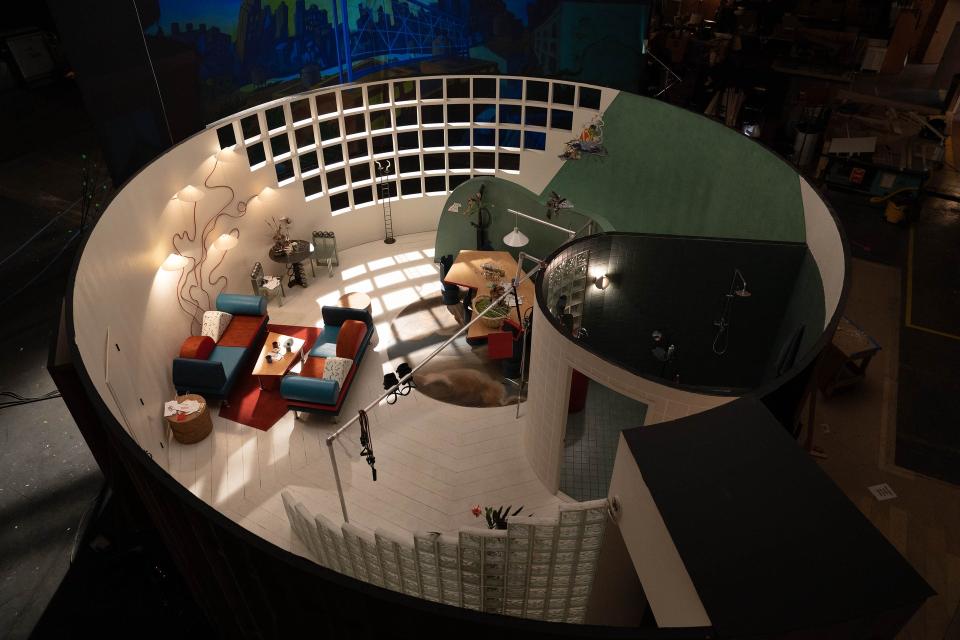
Suffice it to say, between the meandering central journey, the various vignettes, and the fact that it was shot entirely in studio, there were a lot of distinct spaces to build. Early on, two things were clear: One, they’d have to get scrappy in order to stay within budget; and two, they needed something to serve as a unifying visual element across the disparate sets. “Something that I was very adamant about from the very beginning is for the show to flow and for it to feel like we are meandering around a cohesive world, rather than seeing a series of vignettes where they look very different from each other,” Torres tells AD.
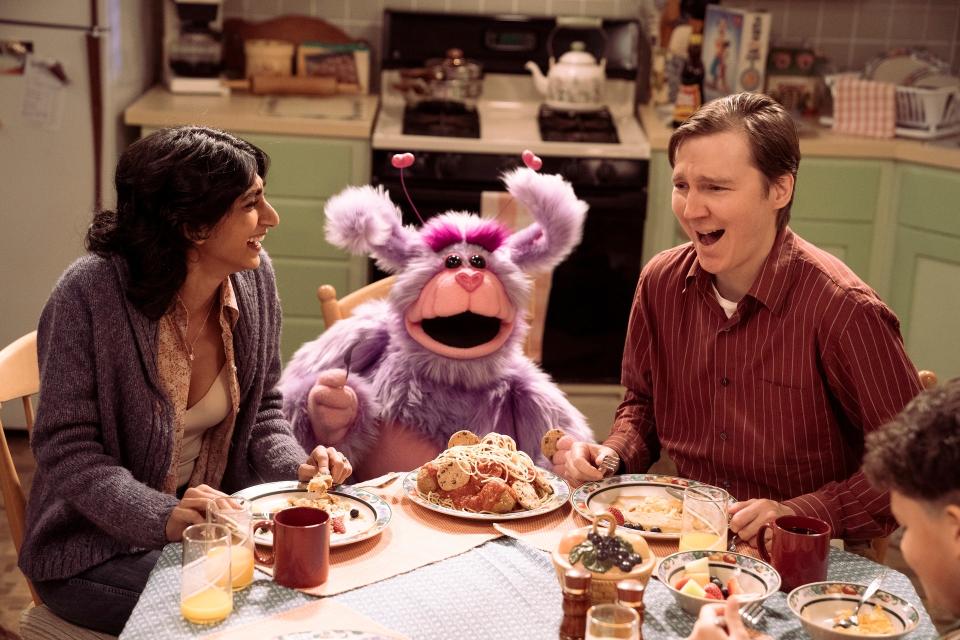
To check this box, and to materialize New York’s essence as an ever-changing city, Ortino proposed using scaffolding (often in place of walls). It turned out to be a cost-effective remedy that gives the show its distinct visual texture. Another unifying element was Torres’s decision to frame many of the sets floating in black space, which was inspired by video games like The Sims and Age of Empires.
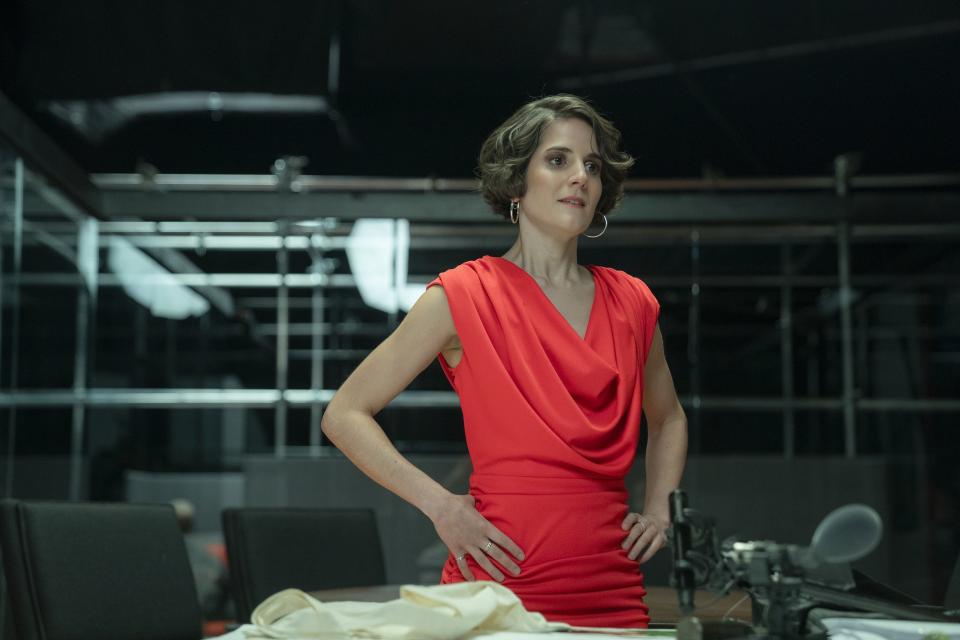
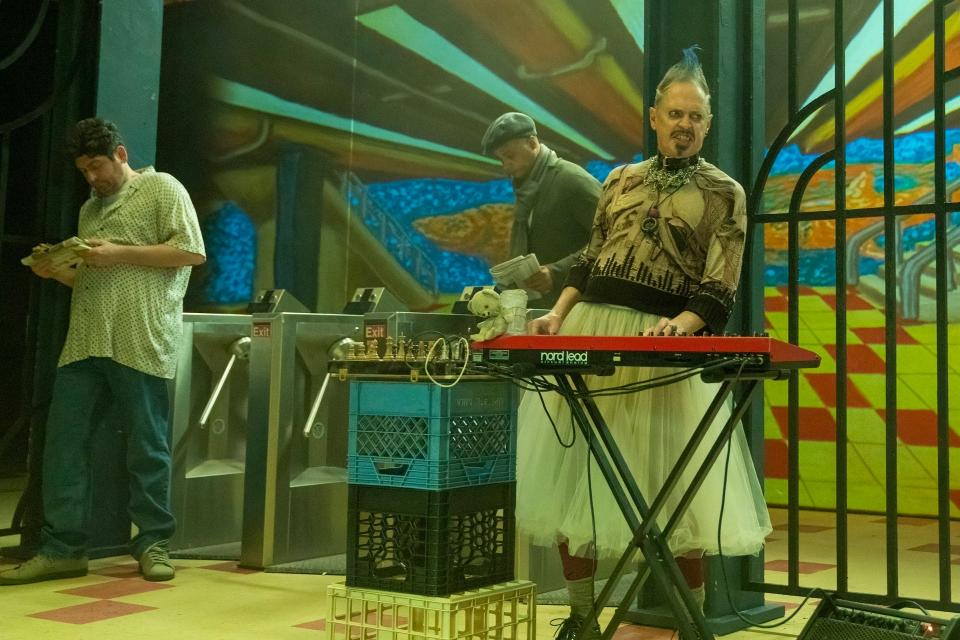
“Budget constraints really ended up creating a lot of interesting ideas,” Torres shares. “We went vignette by vignette, and we numbered them one to five in order of how complete the set should be. My apartment in the show was a five, but a restaurant where we only see screens [with pictures of] food is a one.” Full of imaginative details, the apartment is perfectly aligned with the Julio character, who’s concerned with protecting his individuality. The entire space is shaped like a spiral—a clever literalization of Julio’s anxious mood in the series.
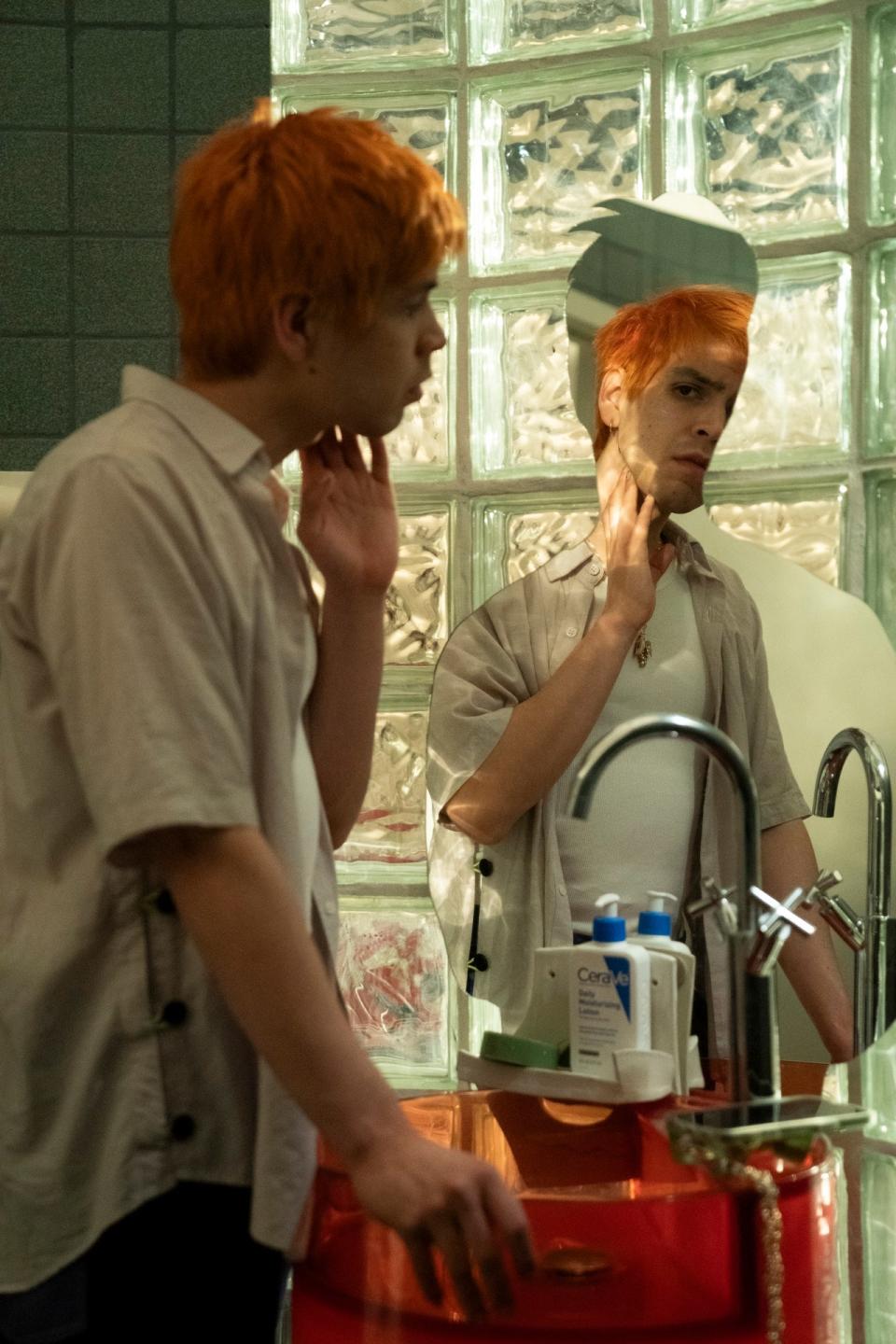
Throughout even in the sparest of spaces, small visual jokes pile up. In the apartment of Skyler, an influencer played by Jaboukie Young-White, a ring light that looks about four feet in diameter stands menacingly as the only light source, towering over everything else. In the aforementioned insurance-call-center vignette, the office’s privacy cubicles are interrupted by cutouts that allow Demie’s character to reach for a hand sanitizer dispenser without leaving her desk. These details sprung out from energetic discussions with the team, where everyone was encouraged to suggest their most out-of-the-box ideas. "At the beginning, it was like trying to make people understand that it was okay to make this weird thing,” Ortino says. But by the end, everybody on the set had an opinion, he explains. “It was like a machine that has started generating the sets without me.”
![“I really love portraying things as they feel rather than as they are,” Torres says, regarding the visual humor in the show. “That was a huge joke in and of itself, that [Skyler’s] ring light is, like, half of the apartment. Also the reverse, that he can’t really see beyond the ring light because everything else is backlit.”](https://s.yimg.com/ny/api/res/1.2/lQaM3xYzqQpxyl4PXt6XlQ--/YXBwaWQ9aGlnaGxhbmRlcjt3PTk2MDtoPTY0MA--/https://media.zenfs.com/en/architectural_digest_422/ba216d87fd27bbf67ef782a37795dc01)
Instead of allowing budget constraints to zap the creativity from the show’s set design, the Fantasmas team used their constraints to inspire some of the most fresh, unconventional-looking spaces on television these days. “I think [Ortino and I] both have the quality of thriving within limitations, which is a theme of the show and a theme that I'm very preoccupied with,” Torres says. “I’m very interested in the idea of having a very small range, but finding so many worlds within that small range. I think creativity thrives in scrappy people who figure things out.”
New episodes of Fantasmas air on HBO and stream on Max on Fridays at 11pm ET.
Originally Appeared on Architectural Digest
More Great Celebrity Style Stories From AD
The Full House House Hits the Market for $6.5 Million—Take a Peek Inside
Julianne Moore’s Homes: A Look at the Oscar Winner’s Stunning Residences
Cabaret Transforms a Classic NYC Theater Into an Uninhibited German Underground
Not a subscriber? Join AD for print and digital access now.
Browse the AD PRO Directory to find an AD-approved design expert for your next project.


